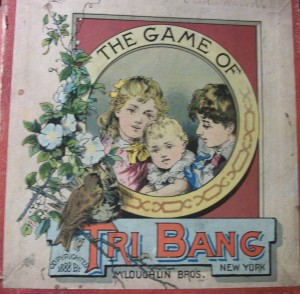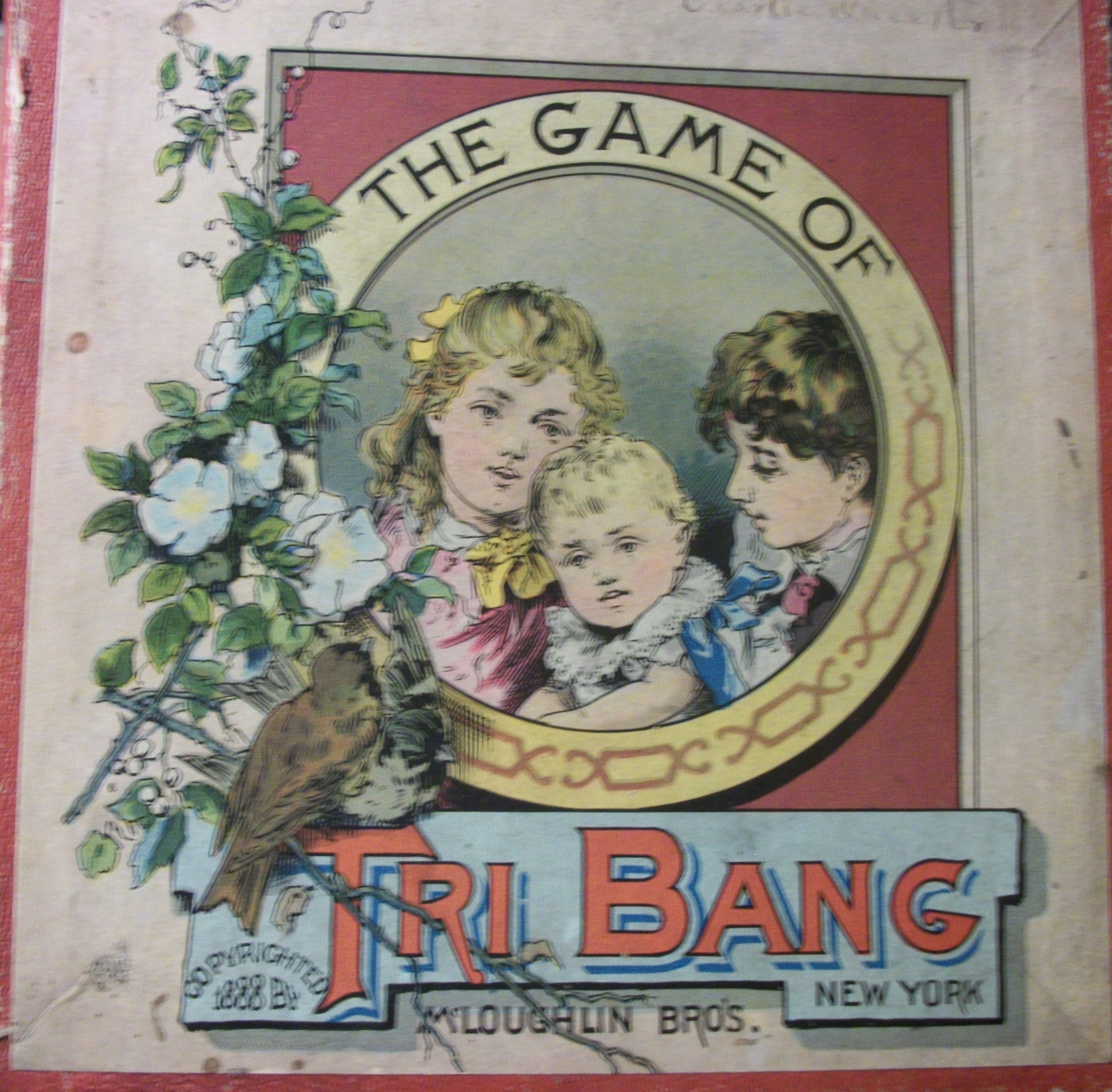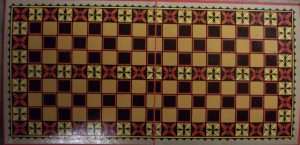 The 1888 game of Tri Bang by McLoughlin Bros. shares within it’s directions why McLoughlin Bros. games are so highly collectible today. The company was not any too shy about expressing their superiority over other game companies of the time. However, it must be said, other antique games, like E.I. Horsman’s Seven Sleepers or Puss in the Corner by Parker Brothers, do rival McLoughlin’s colorful game details and are just as collectible.
The 1888 game of Tri Bang by McLoughlin Bros. shares within it’s directions why McLoughlin Bros. games are so highly collectible today. The company was not any too shy about expressing their superiority over other game companies of the time. However, it must be said, other antique games, like E.I. Horsman’s Seven Sleepers or Puss in the Corner by Parker Brothers, do rival McLoughlin’s colorful game details and are just as collectible.
Written inside Tri Bang’s small instruction pamphlet is the following:
“All in want of games will find it to their advantage to ask the dealers for, and examine those published by McLoughlin Bros. In number and variety they are foremost, and whether the game desired be old or new, such as the ordinary checker board of centuries ago, or their great new game of Reversi, if one of their make, it will be found superior in finish and equipment.”
In addition, the McLoughlin Company includes (talking about itself), “A child feels that he gets a substantial present when he receives one of them, and he will find constant pleasure in playing it.”
Although Tri-Bang’s outer game box is decorative, the board inside doesn’t contain any of the charming images found on other McLoughlin Bros. games. Game boards of Life’s Mishaps or Captive Princess are noted for their beautifully illustrated scenes and characters.
Nonetheless, Tri Bang offers a wonderful addition to the game closet; both in design and play.
Tri Bang is a two-player game. The board is a 9×19 rectangular board and contains ornamental squares along the outer edge and center. As the name implies, the object is to be the first player to form a row of three. Upon doing so, the player calls out ‘Tri Bang’ and wins.
To begin play, each player receives 25 small wooden discs of different colors. Taking turns, each player sets a piece down on any space of the board they choose, in effort to form a row of three, or prevent his opponent from creating one. The forming of a ‘Tri Bang’ must begin or end on an ornamental square of the board. If the ornamental square is in the middle of the three, it does not form a winning ‘Tri Bang’.
Players can choose to continue playing even after one player creates the first row of three. Playing this way, the game ends once all pieces are used. The winner is the player with the most rows of three. They call out ‘Tri Bang’ each time one is made.
Fun to play by all ages, I will end with another phrase found within McLoughlin’s phamplet from inside the game. The 1888 antique game is said to not only “Show Well, but Play Well.”

